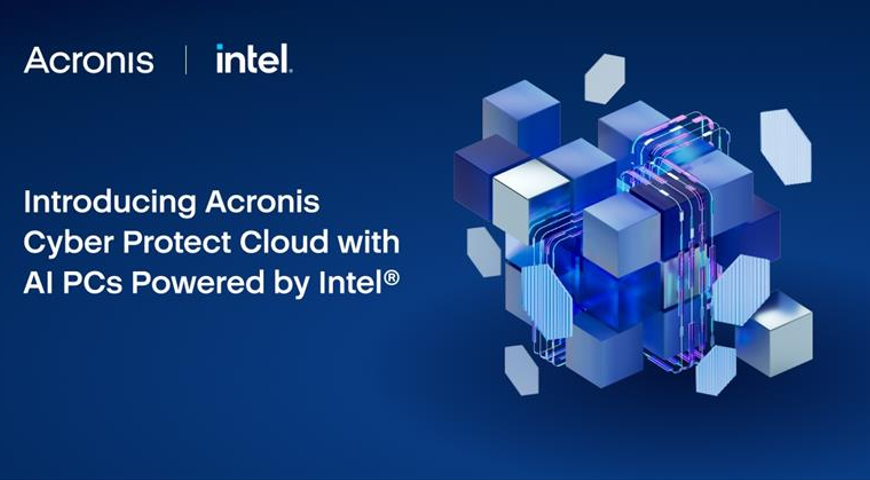
Virtualization is a standard part of modern IT — the basic concepts are assumed for this audience. This guide focuses on decision criteria IT teams care about: total cost, operational model, resilience, and migration options. It compares Proxmox VE and VMware ESXi through that lens.
By abstracting hardware resources, organizations can scale applications quickly without massive infrastructure investments and can design highly available architectures that keep services running during failures.
VMware ESXi and Proxmox Virtual Environment (VE) are two popular hypervisor platforms. While VMware has a long track record in the enterprise, Proxmox has gained traction for being open source and flexible. The right choice depends on budget, workload type, performance requirements and the level of commercial support desired.
Regardless of platform, agentless cyber‑protection solutions such as Acronis Cyber Protect are essential to safeguard workloads and ensure data resilience across hybrid environments.
Proxmox VE Overview
Platform architecture. Proxmox VE is a Debian‑based virtualization platform that combines full KVM virtualization and lightweight Linux Containers (LXC) to support both VM‑based and containerized workloads.
Administrators manage the stack through a web interface, command‑line tools and a REST API. Built‑in clustering enables nodes to be joined into high‑availability groups and managed centrally.
Storage is flexible: Proxmox can use local disks, ZFS, network file systems such as NFS and iSCSI, or distributed storage like Ceph. Networking is handled through Linux bridges and Open vSwitch, enabling VLANs and link aggregation.
Strengths of Proxmox
- Low cost and open source. The platform is free to use with optional subscription plans for support and access to enterprise update repositories. Organizations can deploy it without licensing fees and choose commodity hardware, making it attractive for labs, test environments and cost‑constrained scenarios.
- Flexibility for mixed workloads. The integration of KVM and LXC allows administrators to run heavy VM workloads alongside efficient containers. This reduces overhead when only lightweight services are required and simplifies management for mixed environments.
- Clustering and high availability. Proxmox clusters use Corosync to coordinate nodes and detect failures. If quorum (the minimum number of active nodes) is not reached, the cluster will suspend HA actions to avoid split‑brain. In practice, this means you must carefully design quorum rules and shared storage to ensure reliable failover.
- Active community. An engaged open‑source community contributes add‑ons and provides support through forums, wikis and scripts. This helps users troubleshoot and extend Proxmox without a commercial contract.
Limitations of Proxmox
- Native backup and security gaps. Proxmox provides snapshots and a deduplicating Proxmox Backup Server (PBS). Snapshots capture a moment in time but are not long‑term backups; they share storage with the original VM and cannot protect against ransomware or logical corruption. PBS creates incremental backups but lacks advanced features like immutable off‑site copies, anti‑malware scanning and orchestrated disaster recovery.
- Smaller ecosystem and certification. Proxmox’s open‑source model means fewer official integrations and vendor certifications compared with VMware. Enterprises that rely on commercial software stacks may find limited support or need to self‑validate integrations.
- Operational expertise required. High‑availability and storage deployments require Linux knowledge. Cluster quorum, shared storage and network bonding must be planned carefully, and misconfiguration can lead to outages. Enterprises without in‑house Linux skills may prefer a solution with built‑in wizards and support.
VMware ESXi Overview
Platform architecture. VMware ESXi is a bare‑metal hypervisor that runs directly on server hardware. It forms the foundation of the vSphere suite along with vCenter Server for centralized management and advanced services. Key features include:
- vMotion and Storage vMotion. Live migration of running VMs between hosts and datastores with no downtime. This enables maintenance without service interruption and balances workloads across hosts.
- Distributed Resource Scheduler (DRS). Automated load balancing of VMs based on resource utilization. DRS works with vMotion to place VMs on the most suitable hosts and rebalance when consumption changes.
- High Availability (HA) and Fault Tolerance. vSphere HA monitors hosts and restarts VMs on another host after failure; fault tolerance keeps a secondary VM in lockstep to eliminate downtime.
- Scalable storage and network. VMware integrates with vSAN for hyperconverged storage and NSX for software‑defined networking. These services bring enterprise‑grade replication, deduplication and micro‑segmentation.
- Robust API and automation. vCenter and PowerCLI provide a mature API and scripting environment that automates provisioning, patching and lifecycle management. Ecosystem tools such as Aria Operations and Horizon extend monitoring and desktop virtualization.
Strengths of VMware
- Mature and reliable. ESXi has been refined over two decades and is known for stability and predictable performance. Enterprises trust it for mission‑critical workloads.
- Rich ecosystem and enterprise support. VMware partners with major hardware and software vendors. Certified integrations and professional support plans make it easier to run commercial applications and comply with regulatory standards.
- Advanced automation and scalability. Features like vMotion, DRS and Storage vMotion allow seamless migration, automated resource balancing and non‑disruptive maintenance. Large clusters with hundreds of hosts can be managed centrally.
Limitations of VMware
- Cost and licensing. ESXi licensing is sold per CPU or per core with feature tiers. Enterprise features such as vMotion and DRS require higher editions. The up‑front and recurring costs can be significant for small teams.
- Vendor lock‑in. It can occur across most virtualization platforms; while VMware offers a broad ecosystem to simplify operations, migration away from any provider requires planning and tooling.
- Complexity. The full vSphere stack has many components. Deploying and managing vSAN, NSX and Aria solutions may require dedicated expertise.
Head‑to‑Head Comparison
The table highlights that Proxmox excels in cost control and flexibility, while VMware leads in enterprise‑grade features, ecosystem breadth and integrated support. Organizations should weigh these factors against their specific requirements.
Use Cases and Ideal Users
Proxmox VE suits small businesses, labs, managed service providers and edge deployments where cost efficiency and open‑source flexibility are priorities. Its support for both VMs and containers makes it ideal for dev/test environments or mixed Linux workloads. Basic high‑availability clustering satisfies non‑critical applications, and administrators who are comfortable with Linux can tune storage and networking to their needs.
VMware ESXi is geared toward enterprises running mission‑critical applications with high uptime requirements. The platform’s mature ecosystem, certified integrations and full stack of services—vSAN, NSX, automation tools—make it suitable for large multi‑site environments and regulated industries. It is also a common standard for vendor support and cloud interoperability.
Design considerations
When planning a deployment:
- Proxmox designers should plan storage and network carefully. Choosing between ZFS, Ceph and external storage affects performance and redundancy. Bonding network interfaces and ensuring quorum across nodes are crucial for high availability.
- VMware designers should budget for software licenses and maintenance. Implement granular role‑based access control (RBAC) and patch management to maintain security. Consider whether vSAN and NSX are necessary or if simpler SAN/NAS and traditional networking suffice.
Hybrid and Transitional Strategies
Transitioning workloads between hypervisors requires conversion and careful testing. Acronis provides migration capabilities—Universal Restore and VM Convert—that streamline secure migrations between physical, virtual and cloud environments. These tools reduce complexity, automate conversion steps, and help validate workload integrity post‑migration.
The choice should be driven by budget, scale, compliance requirements and internal skill sets.
Backup and Disaster Recovery Considerations
Snapshots and replication alone do not guarantee recoverability. Snapshots capture a VM state but rely on the base disk and are vulnerable to ransomware and logical corruption.
Replication copies data to another site but reproduces malware or corrupted data if the source is compromised. Long‑term, immutable backups are critical to protect against data loss.
Practical protection patterns
- 3‑2‑1‑1 rule. Keep three copies of data (production + two backups) on two different media, with at least one off‑site and one offline or immutable copy. This ensures recovery even if primary and secondary sites are compromised.
- Least privilege. Use fine‑grained access controls so that backup administrators cannot delete backup storage and attackers cannot modify retention policies. Implement multifactor authentication and separate credentials for backup infrastructure.
- Routine DR testing. Periodically restore workloads in a non‑production environment to verify that backups are bootable and applications are consistent. Test failover plans and document recovery times to ensure they meet business requirements.
Why Acronis Cyber Protect
Acronis Cyber Protect Cloud and Acronis Cyber Protect support both agentless and agent-based backup and cyber-protection for Proxmox and VMware. Agentless protection uses hypervisor APIs or a host-level connector to capture VM/guest state, reducing the need to install agents inside every VM; where required, Acronis also supports in-guest agents to provide application-consistent backups, endpoint security and RMM features. Note that a host-level component may still be needed on hypervisor nodes depending on the environment and edition.
Acronis also provides migration tools (Universal Restore / VM Convert) to simplify moving workloads between hypervisors, physical hosts and cloud targets.
Incremental‑forever backup is supported but configurable; administrators can choose full, differential or incremental policies to meet RPO/RTO and retention requirements.
Key benefits include:
- Agentless VM and container protection. Agentless protection (via hypervisor APIs) reduces management overhead by protecting VMs without installing agents, but it has limitations: in‑guest security, RMM and some application‑consistent operations require an in‑guest agent. Acronis supports both approaches — use agentless where suitable and deploy agents for workloads that need deeper control.
- Immutable, off‑site backups. Stores backups in Acronis Cloud or S3‑compatible storage with WORM immutability and ransomware protection.
- Integrated anti‑malware and vulnerability management. Scans backups and systems to detect malware and vulnerabilities before recovery.
- Orchestrated disaster recovery automates failover to local or cloud environments, tests recovery plans and minimizes downtime. Note: orchestrated DR is currently available for VMware; Proxmox orchestration support is not yet available.
- Granular recovery and universal restore. Recovers individual files, application items or entire VMs; restores to dissimilar hardware or clouds.
By combining backups, anti‑malware, patch management and DR in a single solution, Acronis enables consistent protection across hybrid infrastructures and reduces administrative overhead.
Conclusion
With Acronis Universal Restore and VM Convert, organizations gain hypervisor mobility — the ability to migrate workloads between Proxmox, VMware, physical servers and public clouds, reducing dependence on any single hypervisor.
Proxmox VE and VMware ESXi each offer compelling advantages. Proxmox provides cost‑effective virtualization for mixed workloads and labs, with open‑source flexibility and community support. VMware delivers mature, enterprise‑grade features, a rich ecosystem and robust automation for mission‑critical applications.
The right choice depends on budget, skill set, scale and compliance needs. Many organizations will find value in deploying both, using Proxmox for non‑critical or cost‑sensitive workloads and VMware for workloads that demand high availability and vendor certification.
Irrespective of platform, data protection is non‑negotiable. Organizations must look beyond native snapshots and replication and adopt comprehensive cyber protection.
Acronis Cyber Protect provides agentless backup, immutability, anti‑ransomware, and disaster recovery orchestration across both Proxmox and VMware environments, ensuring resilience and rapid recovery when adversity strikes.
About Acronis
A Swiss company founded in Singapore in 2003, Acronis has 15 offices worldwide and employees in 50+ countries. Acronis Cyber Protect Cloud is available in 26 languages in 150 countries and is used by over 21,000 service providers to protect over 750,000 businesses.



